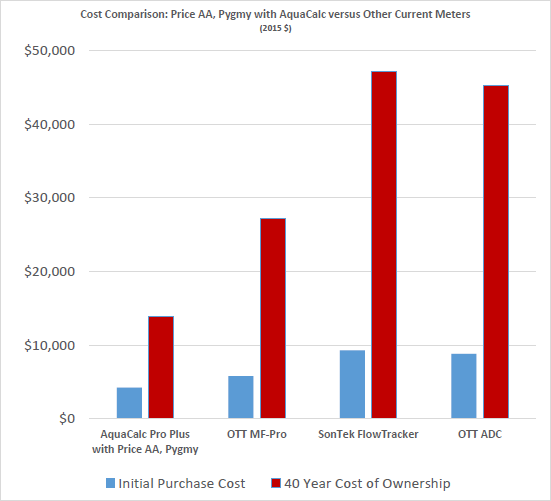 Loading... Please wait...
Loading... Please wait...Hydrological Equipment
NEWS RELEASE
Cost and Accuracy Comparisons

Mechanical Current Meter System with AquaCalc Versus Other Point Velocity Discharge Systems
Download PDF
- Home
- Stage Measurement
- Weirs
- Portable Weir Plates
- Large Portable Weir Plate, 90° Angle
The USGS Weir Plates are designed for volumetric measurements but can also be installed as a primary device for use with a stilling well. The most accurate method of measuring small discharges is by observing the time required to fill a container of known capacity, or the time required to partly fill a calibrated container to a known volume. The basic equipment needed is a calibrated container and a stopwatch.
Calibration is done by weighing the container with varying amounts of water in it and noting the depth of water in the container.
Volumetric measurements are made under two types of conditions:
1. When the flow is concentrated or can be concentrated so that all of it may be diverted into a container.
2. When the depth of water flowing over broad-crested weirs and dams is small and volumetric-increment samples can be obtained.
Measurements are made under the first condition at V-notch weirs, at artificial controls where all the flow is in the notch, and at places where an earth dam can be built and all the water can be diverted through a pipe of small diameter. Sometimes it is necessary to place a trough against the artificial control to carry the water from the control to the calibrated container. If a small dam is built, the stage behind the dam is allowed to stabilize before the measurement is begun. The measurement is made three or four times to be certain no errors have been made and to be sure the results are consistent.
Volumetric measurements are made under the second condition by catching a segment of the streamflow with a container having a known width of opening. Samples are taken at a number of locations across the dam or weir similar to procedures used for current-meter measurements. The flow rate of each sample is increased by the ratio of the subsection width to the sampled width to obtain a discharge rate for each subsection. The total discharge of the stream is the summation of the discharge rates of each subsection.







